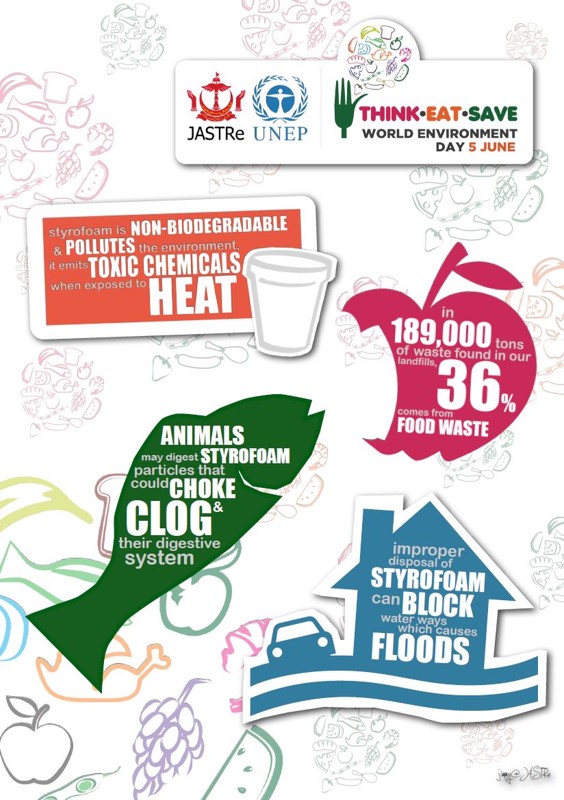The
Ministry of Development through the Department of Environment, Parks and
Recreation (JASTRe)
has launched a campaign in conjunction with World Environment Day 2013
celebration to reduce the use of styrofoam
containers in Brunei Darussalam to lessen the amount of solid waste, while at
the same time, reducing the risk of potential health hazards that may come from
styrofoam
products.
As an
initial stage of the campaign, JASTRe
has advised schools in the country to reduce the use of styrofoam
containers in their respective canteens.
During
the launching, three schools were presented with tokens of appreciation for
successfully eliminating the use of styrofoam
containers at their canteens, as well as
encouraging people to make use of reusable containers and turning away
from those made from styrofoam.
The three schools are: Sekolah
Menengah
Sayyidina
Hasan, Maktab
Duli
Pengiran Muda Al-Muhtadee
Billah
and Pusat Tingkatan
Enam
Katok
that have been successful in
Styrofoam
is a trade name for polystyrene, which is made of petrol – a non-renewable
resource. According to the Environmental Protection Agency (EPA) in 1986, the
production process of polystyrene is the fifth largest hazardous waste
producer. Styrofoam is a material that does not decompose easily and is
resistant to photolysis, a process of decomposition by the action of light. It
will take more than 500 years to decay.
Producing
styrofoam
leads to about 57 types of toxic materials that not only pollute the air but it
also produce solid waste and sewage sludge that needs to be properly disposed.
Styrofoam manufacturing uses 'hydrofluorocarbons' (HFCs) which negatively
affects the ozone layer and global warming. HFCs are less detrimental to the
ozone than CFCs, which they replaced in the manufacturing of Styrofoam, but it
is thought that the impact of HFCs on global warming is much more serious. Due
to the lightweight structure that causes the styrofoam
to easily drift to sea, rivers and irrigation, they are classified as 'marine
debris' by many countries in the world.

Prepared by: Department of Enviroment, Parks and Recreation
Published Date: 2013


